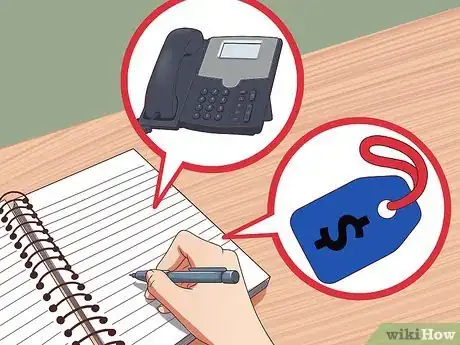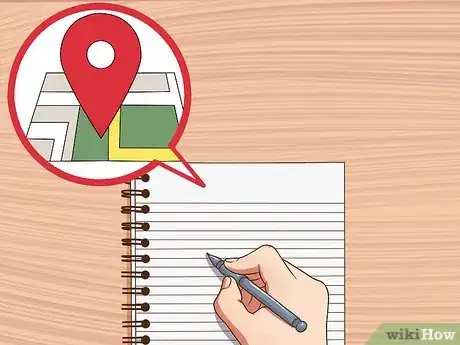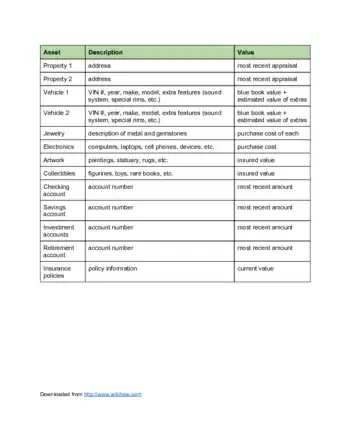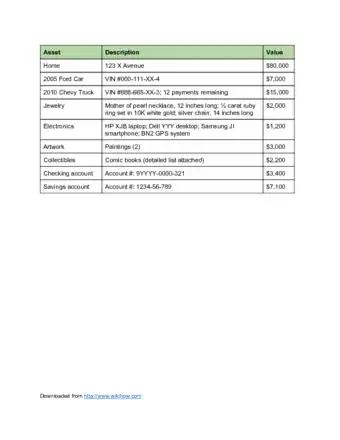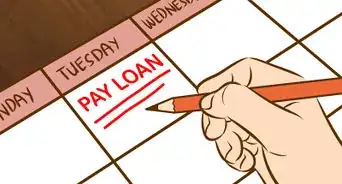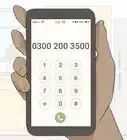This article was co-authored by Michael R. Lewis. Michael R. Lewis is a retired corporate executive, entrepreneur, and investment advisor in Texas. He has over 40 years of experience in business and finance, including as a Vice President for Blue Cross Blue Shield of Texas. He has a BBA in Industrial Management from the University of Texas at Austin.
wikiHow marks an article as reader-approved once it receives enough positive feedback. In this case, 94% of readers who voted found the article helpful, earning it our reader-approved status.
This article has been viewed 226,221 times.
Listing your personal assets can be tedious and time-consuming. Despite the hassle, the effort will pay off when you need to make an insurance claim if your home is broken into or destroyed by fire or flood. You can also use it to determine asset distribution as part of an estate plan. There are a few simple steps you can follow in order to make a list of your personal assets.
Steps
Writing Your List
-
1Select a record-keeping system. There are two main ways you can document your list. You can do it by hand in a notebook. This has the benefit of being accessible at any time when the notebook is in hand and can be kept in a safe place. The other option is to use an electronic spreadsheet to keep records, which is convenient and can be easily changed. An electronic list can also be printed, downloaded into the Cloud, or stored on a thumb drive.
- You can create tables in Microsoft Word or use Microsoft Excel to create your electronic list. You can make headings for each category and subcategory.You can also easily add things to your list in either program by adding rows and columns to the tables.
- Either option is legitimate. It depends on your personal preference for record keeping. The electronic version is more easily shared, changed, and added to, so many people choose this option.
-
2Separate your physical assets. There are two main types of assets. The first is physical assets. These are the tangible properties you own such as your home, furnishings, automobiles, artwork, clothes, and other items that you can see and feel. The evidence of your ownership of physical assets is documented in legal documents including deeds and titles.[1]
- Some items may be difficult to classify since they have elements of both categories.
- For example, fine jewelry may be family heirlooms passed down from generation to generation. It is still worn on special occasions and listed in the physical category. At the same time, this same jewelry may be valuable enough that it requires insurance and special safe-keeping, which are elements typically required for financial assets.
Advertisement -
3Distinguish your financial assets. The second type of assets are financial assets. These are your intangible properties that represent ownership of bank accounts, securities, insurance policies, stocks and bonds, and other evidence of value for those assets that affect your income or wealth.[2]
- Financial assets also include home, car, and personal loans, retirement and investment accounts, and credit cards.
- Don’t worry about making a strict distinction between the two categories. Just put the items in the categories that you feel best represent them. It is more important that all items are listed than where they appear on your list.
-
4Document personal information. On your inventory list, you should document a good amount of your personal information. This will help attach you to your assets through the documentation. You should include your name, passport number, income tax number, location of your will, and signature.
- You can also include the names of the executors of your will, safety deposit box location and number, email accounts, and online passwords for bills, accounts, and profiles.[3]
-
5Describe the items. Once you start your personal inventory, you need to include as much information as possible about each physical asset. This includes a detailed description of each item. You should create categories under physical assets in your list in order to keep your assets straight. You can have a category for automobiles, jewelry, entertainment equipment, and valuable collections. You should also include the fair market value of each item you list.[4]
- For example, a description of a television should include the name and size of the equipment, necessary accessories for operation such as a remote, its general condition, and how much it costs.
- You should value your collections, such as coins, stamps, or collectibles, as a unit instead of item by item.[5]
- Include photographs with dates they were taken to avoid later misunderstandings or confusion about the items you own.
- If appraisals of value have been completed in the past, note the appraiser’s name, contact information, and relevant details of the appraisal.
-
6Provide evidence of ownership. In addition to the list, you need to give evidence of intangible assets such as deeds, titles, certificates, insurance policies, and financial accounts.[6] These should be identified with account numbers and owner details such as name, address, and Social Security numbers. You should also include the names of any persons that have legal authority to manage, sell, or otherwise dispose of each financial asset.
- You should also include the names of the owners, the insured, and beneficiaries of any insurance policies.
-
7Provide acquisition details when necessary. For some items, especially the more costly items, you may need to include acquisition information. If you remember where you got certain items, you should list the elements of acquisition including the name, address, and phone number of the seller as well as the price.
- You should describe how you came to possess the item, such as a purchase, a gift, an inheritance, or a foreclosure.
- For extremely high cost items, keep purchase receipts and warranty information if possible.
-
8Include location information. The location of items or important documents should also be listed in your personal asset inventory. For each of your physical assets, you should note the place that physical items are kept or stored along with special security required. For your financial accounts, you should identify them with the name, address, and phone number of the custodian, broker, or bank where the account is located.
- Write down the name of the contact person responsible for accessing each of your accounts, the date the account was opened, and its current status.
- The location of stock certificates, deeds, mortgages, certificate of deposits, and other evidence of an intangible asset should be clearly noted.
- You should also list any person authorized to access the account and details required to have entry such as passwords, combinations of safes, or safety deposit keys.
-
9Note special conditions for certain items. There may be some items in your inventory that need special attention or require certain actions to be maintained. Just like with other items, expensive jewelry, art, collectibles, and precious metals should be described fully in addition to estimates of current values. In addition to these descriptions, any intent to gift such items including names of beneficiaries, addresses, and conditions of transfer should be listed on your asset inventory.
-
10Finish your inventory list. Once you have all of your physical and financial assets listed, listed all personal information, and attached copies of relevant documentation, you need to finish up your list. This includes adding any additional items that did not specifically fit into either of the categories but that you want listed. After you finish the last of the list, you should date your inventory.
- This will help avoid confusion if your list is amended at a later time. A list without a date can be more confusing than not having the list.
Protecting Your List
-
1Attach a list of legal representatives or authorized agents. You should list the individuals that can help with your affairs if you are unable to. In the event of an emergency or in a time where you are unable to conduct your own affairs, you need to document the names, addresses, and contact information of your advisers or family members who have authority to act on your behalf.
- You should notify these individuals that you have completed a personal asset inventory, where it is located, and any instructions regarding when and how to access the information.
-
2Scan or photocopy all of your receipts. To keep your property safe, you should keep as many receipts as possible, especially on high ticket items. If you are using an electronic list, scan your receipts so you can have electronic copies of them. If you made a physical list, make photocopies of your receipts to keep with your list. It is always good to have multiple copies of them just in case something happens to either copy of the receipt.
- You should scan or photocopy any other important documents that show your ownership of items, such as deeds of gifts or transfer of ownership forms.
- You should store the electronic copies of your receipts on the same USB drive as your list. This way all of your documents stay together.
- Keep the original receipts, even if you scan them. You may lose the files or need an original to prove the legitimacy of a purchase. Store them with other important documents.
-
3Make copies of your inventory and store each copy in a secure location. Once you complete your list, you need to keep it safe. You do this by making multiple copies of it and securing one in a safe location. If you did your inventory electronically, you should print a physical copy of the list and store it with other important papers in a fireproof safe or safety deposit box.[7] Keep a second copy in a secure, but accessible place where you can easily change it if necessary.
- You should also provide one copy to your attorney or the executor of your estate with instructions about when to access such information.
- If your list is in electronic form, make two copies on separate flash drives that are secured by a password. Keep one of these flash drives and store the other safely.
- If you used a notebook, you should make a copy of it and place the original in the safe or box. The other copy should be kept for you to easily access.
-
4Keep your information up to date. Just because you made one list, your work is not over. You continually purchase things and change assets, so you need to keep your list up to date. Periodically review your list, adding new assets and deleting any assets no longer in your possession. If you acquire or dispose of a significant asset, amend the list as soon as possible following the event. You should note the details of the transaction, such as the date, parties involved, and your reasons for acquisition or disposal.
- Destroy previous lists to avoid confusion, replacing the older list with the amended copy.
Sample Lists
Expert Q&A
Did you know you can get expert answers for this article?
Unlock expert answers by supporting wikiHow
-
QuestionAfter retiring from State employment, is life insurance coverage an asset? Is the state retirement an asset?
 Michael R. LewisMichael R. Lewis is a retired corporate executive, entrepreneur, and investment advisor in Texas. He has over 40 years of experience in business and finance, including as a Vice President for Blue Cross Blue Shield of Texas. He has a BBA in Industrial Management from the University of Texas at Austin.
Michael R. LewisMichael R. Lewis is a retired corporate executive, entrepreneur, and investment advisor in Texas. He has over 40 years of experience in business and finance, including as a Vice President for Blue Cross Blue Shield of Texas. He has a BBA in Industrial Management from the University of Texas at Austin.
Business Advisor
-
QuestionCan I get a list of assets to consider?
 Michael R. LewisMichael R. Lewis is a retired corporate executive, entrepreneur, and investment advisor in Texas. He has over 40 years of experience in business and finance, including as a Vice President for Blue Cross Blue Shield of Texas. He has a BBA in Industrial Management from the University of Texas at Austin.
Michael R. LewisMichael R. Lewis is a retired corporate executive, entrepreneur, and investment advisor in Texas. He has over 40 years of experience in business and finance, including as a Vice President for Blue Cross Blue Shield of Texas. He has a BBA in Industrial Management from the University of Texas at Austin.
Business Advisor
References
- ↑ http://www.investopedia.com/terms/p/physicalasset.asp
- ↑ http://www.investopedia.com/terms/f/financialasset.asp
- ↑ http://kclau.com/wealth-management/asset-inventory
- ↑ http://info.legalzoom.com/compile-inventory-assets-probate-purposes-24192.html
- ↑ http://info.legalzoom.com/compile-inventory-assets-probate-purposes-24192.html
- ↑ http://info.legalzoom.com/compile-inventory-assets-probate-purposes-24192.html
- ↑ http://www.bhg.com/health-family/finances/tips/how-to-protect-important-documents/
About This Article
Making a list of personal assets is a good way to keep track of everything you own. Use an electronic spreadsheet, like Microsoft Excel to organize your list. In the spreadsheet, make 2 lists, one for physical assets, like houses and cars, and 1 for intangible assets, like deeds and titles. After listing each item, write out a short description of it including its condition and value, which will be useful if you ever decide to sell them. Don’t forget to include smaller items like clothing, jewelry, and tech equipment on your list. To see a sample personal assets template, scroll down!






